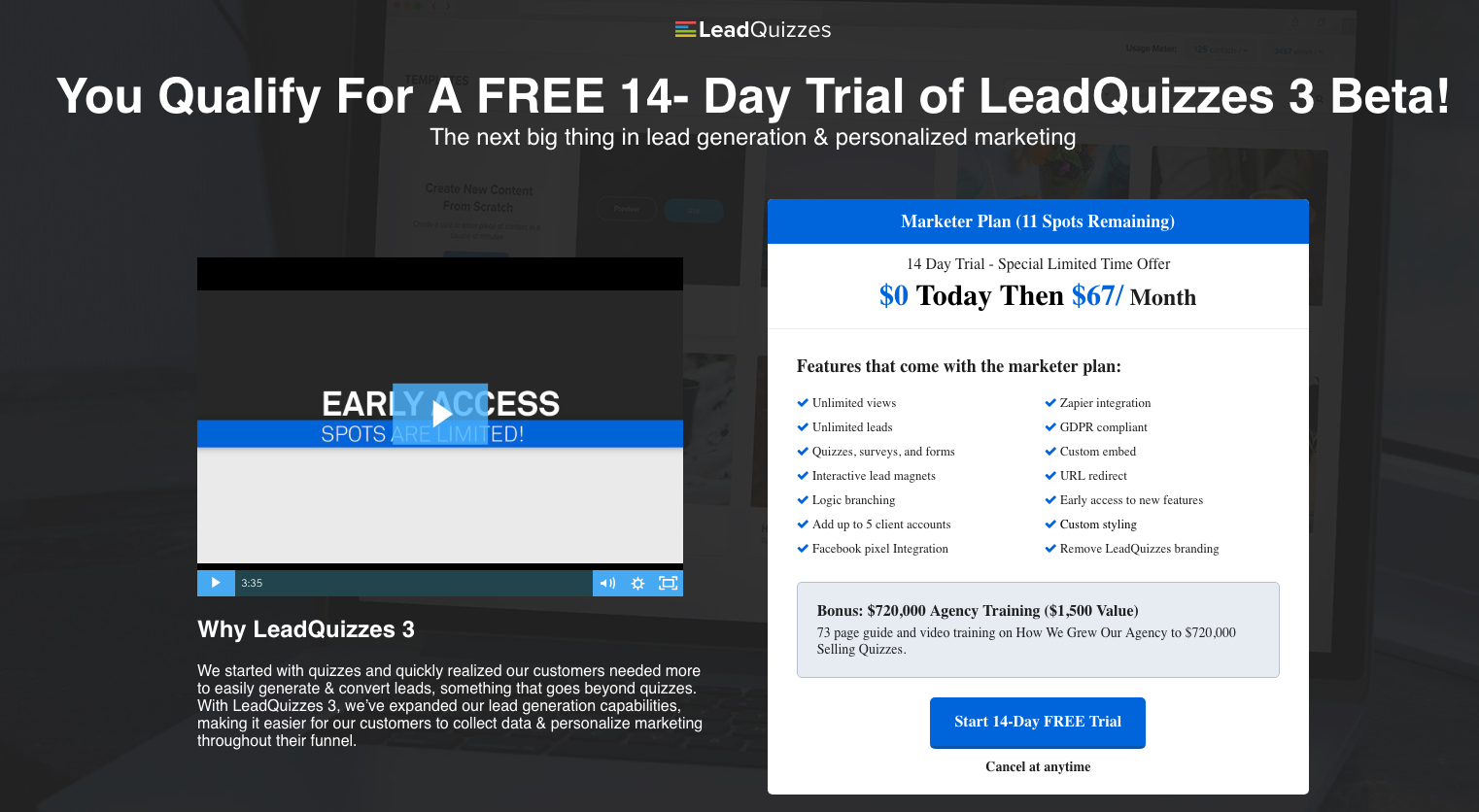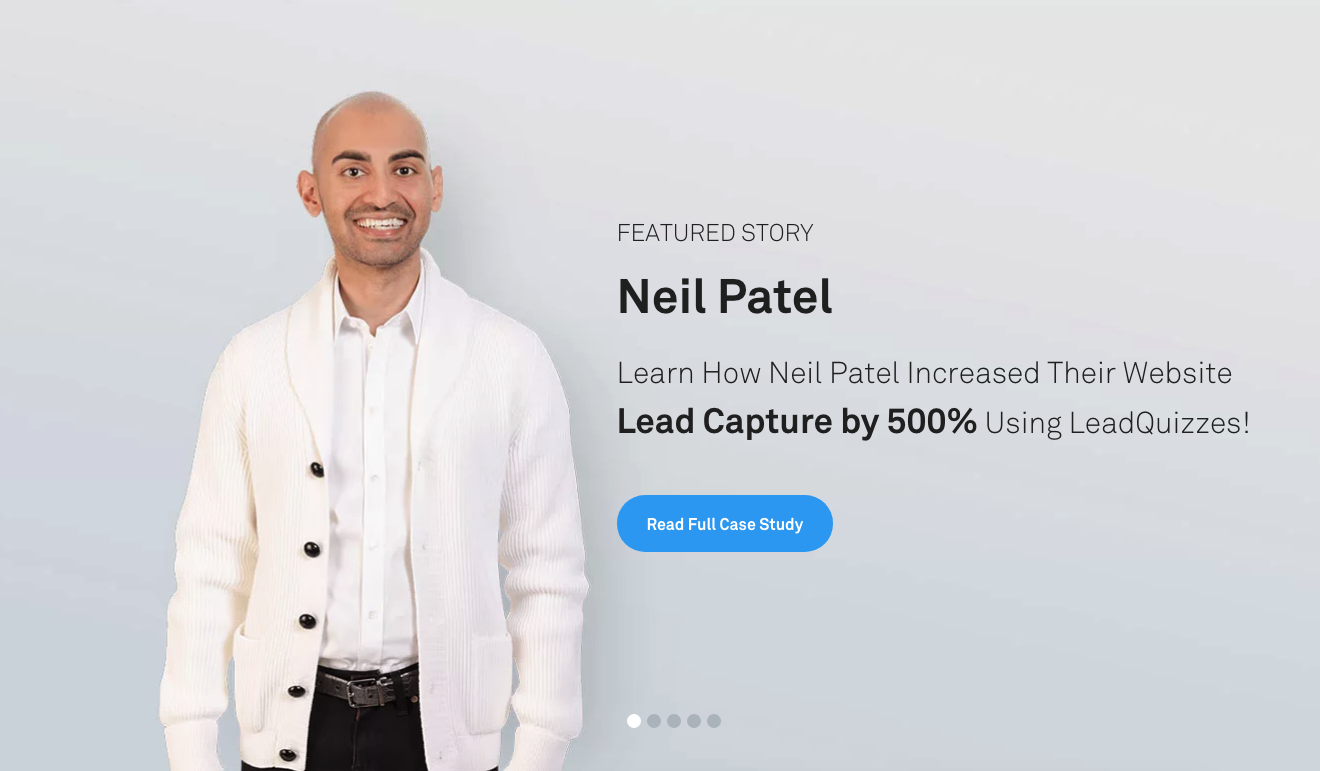Often, in digital marketing, it all comes down to persuasion. More precisely, to your ability to convince your potential customers to start using your product or service. With fierce competition in today’s market, it’s also important to be able to persuade people that what you offer is better than what your competitors have in store.
According to Media Matters, a typical adult is exposed to 600 to 625 ads per day. But how many of those actually convinced you into buying something? Most days it’ll be none. On some occasions, maybe one or two.
What separates those one or two from the remaining 600+ that have no effect on us? It’s the highly effective persuasion techniques they use. In this article, I’m going to present you with 7 persuasion techniques often used by marketers and entrepreneurs to boost their conversions
7 Persuasion Techniques You Should Start Using Right Now
1. Eliminate the abundance of choice
The ability to choose is supposed to be a good thing, right? Of course, but still, many people find making choices hard. The fewer options you give them, the more likely they are to make a choice. Give them too many choices and they’ll just freeze.
It’s what Barry Schwartz refers to as the paradox of choice. What he asserts is, basically, that too many choices will paralyze your consumers.

Imagine going into a store looking for an air freshener. You’ve found the right section of the store and, to your amazement, there are 150 choices. It’s going to take you a while to make a decision and, in some not-so-rare cases, you might end up picking a random one, or even giving up on the purchase.
Now let’s say you walked into a store and discovered they have only one type of an air freshener. You might buy it or not, but still, your decision certainly wouldn’t take as long. In the first case, you had 151 option to choose from, now you have only two – buy or don’t.
Whichever choice you make, having only one product to “choose” from will probably make you feel better about the choice you make as it eliminates the possibility of making the wrong choice.
Having lots of choices is generally a positive thing. In marketing, however, more isn’t always better. When it comes to conversion optimization, eliminating the abundance of choices may actually increase your conversions.
Still, you don’t want to restrict your customers to only one option, so giving people two choices might be just optimal for your conversions.
2. Play the scarcity card
The principle of scarcity is one of the most effective persuasion techniques in marketing and has been around for ages. Investopedia defines the scarcity principle as:
“an economic theory in which a limited supply of a good, coupled with a high demand for that good, results in a mismatch between the desired supply and demand equilibrium.”
In layman terms, the more difficult to obtain a product is, the more valuable (and desirable) it becomes. The fact is that people inherently want more of what they can have less of.
The two main scarcity persuasion techniques used to increase conversions are:
- Quantity-based scarcity (e.g. 2 items left in stock)
- Limited-time offers (e.g. 2 hours left to buy)

The main reason why the scarcity card works is that it makes your customers feel like they’re going to miss out. Which leads us to the phenomenon of FOMO, closely related to the scarcity principle. FOMO stands short for “fear of missing out” and is defined as
“anxiety that an exciting or interesting event may currently be happening elsewhere, often aroused by posts seen on social media”.
Extra tip – Put a number to your offer! It can be a date, a quantity, a number of people accepted, and so on.
3. Make sure your copy contains these persuasive words
Some words are just more persuasive than others. From my copywriting experience, these are the most persuasive words you could use in literally any kind of a copy:
- New. People just love new things. People just love being among the first ones to do things. They love being on the cutting edge of things. That’s why “new” is one of the most persuasive words you can include in your copy.
- Free. Guess what else people love? Free stuff! Offer a free trial or a free sample and it may be all you need to convince people to start using your products or services.

- Because. People like it when you give them a reason for something, even if that “reason” is “because I said so”. That’s why “because” is one of the most persuasive words out there.
- You. You should focus on your customers rather than your own company.
- Now/Today/Instantly. People want the results and they want them as soon as possible. If not yesterday, then at least now!
- Limited. We already mentioned the scarcity principle above.
4. Provide social proof
Remember your parents asking you the most annoying of all questions “Well if all your friends jumped off a bridge, would you do it too?” You probably weren’t aware at the time, but this was probably your first contact with social proof.
In marketing, social proof is regarded as one of the most used persuasion techniques out there. It relies on the tendency people have to base their choices on other people’s decisions. Social proof works particularly well if it comes from people with authority in their field.
In marketing, two of the most used persuasion techniques based on the concept of social proof are customer testimonials and case studies. Content Marketing Institute has identified case studies as the 5th most popular marketing technique, topped only by social media, newsletters, blogs, and website articles. Moreover, 63% of marketers agree that a case study is one of the most persuasive techniques in marketing.
We at LeadQuizzes have an entire section on our website dedicated to case studies and it’s one of our most visited web pages. We have also prepared a detailed guide on case studies (including over 40 case study templates and samples) to showcase your company’s success!

In order to maximize the effects of your social proof persuasion technique, you may want to learn more about how to ask all the right testimonial questions.
5. The “foot in the door” persuasion technique
According to Freedman and Fraser, the foot-in-the-door technique (FITD) “assumes agreeing to a small request increases the likelihood of agreeing to a second, larger request.” In marketing and sales, this means that before you ask your prospect to make a big purchase, you should offer them a cheaper, discounted, or free product or service first.
Asking your prospect for something “small” first makes them commit and makes it more likely for them to accept a bigger request that is about to follow. The second, “bigger” request will thus be seen as a continuation of a successful first arrangement.
The best way to use the foot-in-the-door technique is to first ask your potential customer a question they are unlikely to say no to. Let’s say you’re selling lead generation software that helps users get more potential customers. You could get a first “yes” by confirming that their marketing team struggles with generating leads or could use more leads.
The second step would be to offer them a solution to their lead generation problems.
If the foot-in-the-door doesn’t work for you, you may want to try…
6. The “door in the face” persuasion technique
What if I asked you to jump off a plane holding a sign with a URL to this article to show how awesome you think it is? You’d (probably) say no. If it’s a no, would you at least share it on Facebook?
After the insane initial request, you might just say yes to the second one more easily. Such an approach, where you first ask your prospects to do something huge (which they probably won’t agree to) and then ask for something 10x easier and more realistic is known as the door-in-the-face technique.
In fact, this technique is exactly the opposite to the foot-in-the-door one described above.
Let’s examine another real-life example. You ask a friend to lend you $1000. After the expected “no”, you try again, this time asking for “at least” $100. They’ll probably see your second request as more reasonable (compared to the unrealistic initial one) and are more likely to lend you that money. Even more likely than if you just asked for that amount at first, without relying on the door-in-the-face principle.
7. Make them chuckle… or even laugh out loud
A study by the University College London and the University of Oxford scholars has shown that laughing puts people at ease and makes them more likely to open up. This applies to every life situation – marketing and sales being no exception.

So, try to get creative with your copies. Don’t always use dull, formal, corporate language. Try to crack a joke here and there. Lightening the mood is likely to get your potential customers to get at ease with you and trust you more. It also increases the chances of hearing back from them when doing outreach.
You can also try adding a funny GIF, image, or meme. Let’s say your prospect mentions (or you find out another way) they love Game of Thrones. Just send them a Ned Stark meme and brace yourself for a response and a potential conversion.
In this article, I presented you with 7 highly-effective persuasion techniques to use if you’re looking for a new way to boost your conversions. You can apply those to your copies, ads, campaigns, even the entire marketing strategies. If you haven’t done so already, hopefully, this article has persuaded you to try out at least some of these persuasion techniques!